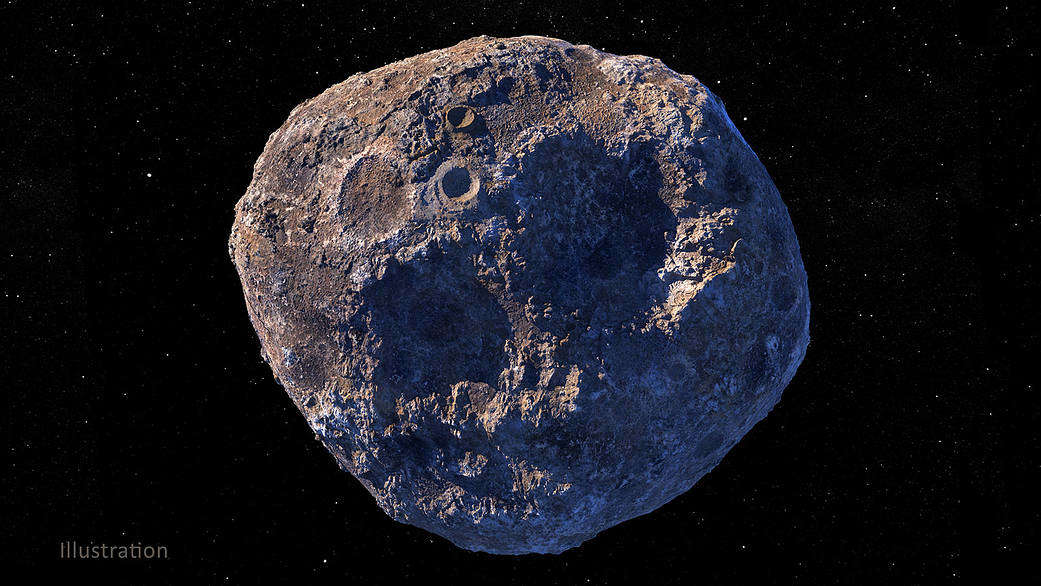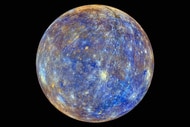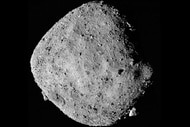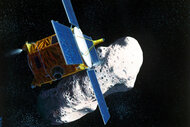Create a free profile to get unlimited access to exclusive videos, sweepstakes, and more!
Psyche is an asteroid that might have been the ancient core of a wrecked planet — or was it?

Asteroids can really be anything. Most of them are space rocks, but those rocks could be anything from ancient pieces of planetary crust to protoplanets that never made it.
Psyche stands out even among some of the weirdest asteroids out there. Orbiting the Sun in the asteroid belt between Mars and Jupiter, it is thought to have once been a core of molten metal, mostly iron and nickel, from a planet disemboweled by too many collisions. The planet obviously didn’t survive. What was left of it eventually solidified into what is now known as one of the most metal (literally) asteroids in the solar system. But wait.
Maybe Psyche is not all that remains of a doomed planet. It could also have broken off from a larger body made of heavy metals, which was once floating around in a different part of the solar system. The only way to find this out is to send something out there. Enter NASA’s Pscyhe mission, which will use a spacecraft powered by electricity to investigate this metalhead.
“While information about the asteroid will continue to accumulate during the mission planning stage, the mission itself is flexible enough to adjust for changing expectations based on the most recent observing data,” said the team of researchers behind Psyche in a study recently published in JGR Planets.
Proving that Psyche was once a planetary core means the spacecraft will have to find evidence that it still has the remnants of a magnetic field. The dual magnetometers on the Psyche spacecraft will probably be able to figure that out. You need a hypersensitive instrument like that to pick up on any semblance of a magnetic field the asteroid might have, because there is no way it has a magnetic field that is anything close to Earth’s. It is unable to generate one the way our planet does. However, if Psyche is magnetized, then it’s a zombie planet.
What exactly Psyche is made of is another question still hanging in space. The asteroid was previously believed to be made of almost solid metal, but newer estimates put its possible metal content anywhere from 30 to 60%, because the rest could possibly be made of silicates (silicon-oxygen compounds). This is where it gets even weirder because Psyche doesn’t fit in with most groups of asteroids. It can’t be a mesosiderite because it doesn’t have enough iron-rich silicates, and it doesn’t have enough iron to be a pallasite or carbonaceous chondrite either.
Finding out what this object is really made of will involve the spacecraft’s gamma ray and neutron spectrometers. Whatever elements make up the surface of Psyche absorb energy from cosmic rays, which are made of highly energetic particles. These particles sometimes collide with other particles and form gamma rays. When the spectrometer focuses on Psyche, it will see how many gamma rays and neutrons absorbed from the asteroid’s surroundings are re-emitted by it. How these match up to energy emitted by certain elements will give away what is in there.
“The greatest unknowns for Psyche's constitution are its porosity and the fraction and composition of its nonmetallic components,” the researchers said.
So is Psyche even a whole asteroid or just a rubble pile that got thrown together when things were constantly butting heads with one another in the early solar system? Other objectives of the mission are determining both that and how porous it is. Comparing it to other asteroids and even the Moon might help. Smaller asteroids like Ryugu tend to be more porous, while larger space rocks like Ceres and Vesta are less porous, which makes them similar to the lunar crust in that way. Psyche is almost 300 times the diameter of Ryugu. It might be as porous as the Moon.
The Psyche mission will launch on Aug. 22, 2022. Propelled by xenon and solar power, it will travel for over three years to a region 280 million miles from the Sun — where the asteroid could reveal secrets it has held for billions of years.













